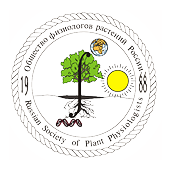Новости науки и практики // Декабрь 2022

Abscisic acid regulates stomatal production by imprinting a SnRK2 kinase-mediated phosphocode on the master regulator SPEECHLESS
Stomata, the epidermal pores for gas exchange between plants and the atmosphere, are the major sites of water loss. During water shortage, plants limit the formation of new stoma via the phytohormone abscisic acid (ABA) to conserve water. However, how ABA suppresses stomatal production is largely unknown. Here, we demonstrate that three core SnRK2 kinases of ABA signaling inhibit the initiation and proliferation of the stomatal precursors in Arabidopsis. Yang et al. show that the SnRK2s function within the precursors and directly phosphorylate SPEECHLESS (SPCH), the master transcription factor for stomatal initiation.
https://www.science.org/doi/10.1126/sciadv.add2063
The World’s Roots Are Getting Shallower
Root-filled soils are hot spots of nutrient cycling and carbon storage. New research finds that the world has lost millions of cubic meters of rooted soil volume—and we’re on track to lose much more.
The B-box transcription factor IbBBX29 regulates leaf development and flavonoid biosynthesis in sweet potato
Gao et al. demonstrate that the B-box (BBX) family transcription factor IbBBX29 regulates the flavonoid contents and development of sweet potato leaves.
Targeting of plasmodesmal proteins requires unconventional signals
Robles Luna et al. report that PDLP5 and its closely related proteins carry novel targeting signals comprising short stretches of amino acid residues. As for PDLP5, it contains two non-redundant, tandemly arranged signals, either of which is sufficient for both localization and biological function regulating viral movement. Strikingly, plasmodesmal targeting signals exhibit little conservation in sequence but are located similarly proximal to the membrane.
https://www.biorxiv.org/content/10.1101/2022.11.11.516208v1?utm_source=substack&utm_medium=email
Computational modeling and quantitative physiology reveal central parameters for brassinosteroid-regulated early cell physiological processes linked to elongation growth of the Arabidopsis root
Großeholz et al. combined computational modeling with quantitative cell physiology to understand the dynamics of the plasma membrane-localized brassinosteroid response pathway during the initiation of cellular responses in the epidermis of the Arabidopsis root tip that are be linked to cell elongation. The model, consisting of ordinary differential equations, comprises the brassinosteroid-induced hyperpolarization of the plasma membrane, the acidification of the apoplast and subsequent cell wall swelling. They demonstrate that the competence of the root epidermal cells for the brassinosteroid response predominantly depends on the amount and activity of H+-ATPases in the plasma membrane.
https://elifesciences.org/articles/73031?utm_source=substack&utm_medium=email
Extension of the short wavelength side of fluorescent proteins using hydrated chromophores, and its application
Sugiura & Nagai report the development of Sumire, a fluorescent protein emitting 414 nm violet fluorescence from a hydrated chromophore. The Sumire’s fluorescence property allows for the creation of FRET probes that can be used simultaneously with CFP-YFP based FRET probes for multi-parameter analysis
https://www.nature.com/articles/s42003-022-04153-7?utm_source=substack&utm_medium=email
Genome-wide dissection of changes in maize root system architecture during modern breeding
Ren et al. found that modern maize breeding has selected for a steeply angled root system. Favourable alleles related to steep root system angle have continuously accumulated over the course of modern breeding, and our data pinpoint the root-related genes that have been selected in different breeding eras. We confirm that two auxin-related genes, ZmRSA3.1 and ZmRSA3.2, contribute to the regulation of root angle and depth in maize.
https://www.nature.com/articles/s41477-022-01274-z
Root alkaline switch
In normal steady-state conditions a slightly acidic apoplast favours a root meristem growth pathway and keeps an immunity signalling pathway switched off.
https://www.nature.com/articles/s41477-022-01250-7
RALF at different speeds
RALFs can induce both fast auxin-independent and slow auxin-dependent responses, which lead to biphasic inhibition of root growth.
https://www.nature.com/articles/s41477-022-01240-9
Shining a new light on the importance of a critical photosynthesis pathway in plants
The mystery of the unclear biological significance of the ferredoxin/thioredoxin pathway in plants has finally been solved by researchers using CRISPR/Cas9. The researchers show that the pathway is important for light-dependent activation of enzymes, photosynthesis in leaves, and normal growth in plants.
https://www.sciencedaily.com/releases/2022/11/221121130608.htm
Now we know how plants steer clear of salt
To avoid salt in soil, plants can change their root direction and grow away from saline areas. Researchers helped find out what makes this possible. The discovery changes our understanding of how plants change their shape and direction of growth and may help alleviate the accelerating global problem of high soil salinity on farmland.
https://www.sciencedaily.com/releases/2022/11/221102095910.htm
The story of the purple tomato — and why its success is a win for GM foods
Although genetically modified foods still get a bit of a bad rap, there are actually many good reasons why modifying an organism’s genetics may be worthwhile. For example, many breeds of genetically modified foods have made them more resistant to disease.
Writing a scientific article: A step-by-step guide for beginners
Many young researchers find it extremely difficult to write scientific articles, and few receive specific training in the art of presenting their research work in written format. Yet, publication is often vital for career advancement, to obtain funding, to obtain academic qualifications, or for all these reasons. Ecarnot and colleagues describe here the basic steps to follow in writing a scientific article.
https://www.sciencedirect.com/science/article/pii/S1878764915001606?via%3Dihub
Новости
Новости науки и практики // Июль 2024
Обзор научных новостей, опубликованных во всемирной паутине за последний месяцНовости науки и практики // Июнь 2024
Обзор научных новостей, опубликованных во всемирной паутине за последний месяцНовости науки и практики // Май 2024
Обзор научных новостей, опубликованных во всемирной паутине за последний месяц


Объявления
Записей не найдено.



